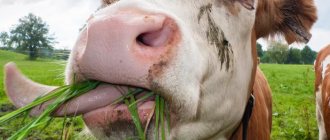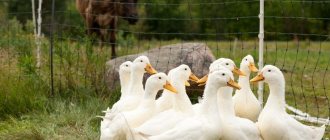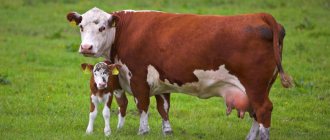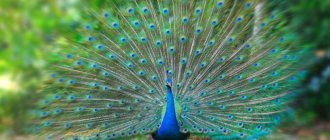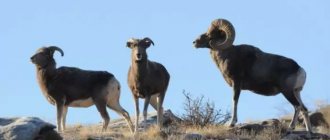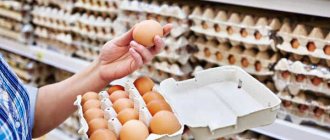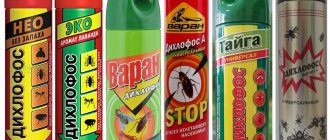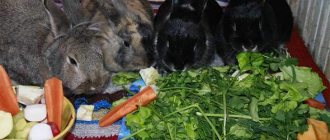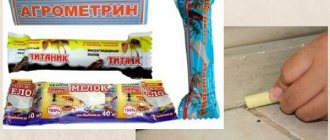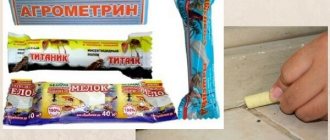Dairy cows need normal, balanced nutrition in sufficient quantities. If animals do not receive good nutrition, their productivity will decrease, the fat content of milk will be significantly lower, and its taste will deteriorate. Dairy cows must be fed properly during the post-calving period to produce sufficient milk for their calves. The article discusses aspects of proper feeding of dairy cows.
Cattle feeding standards
In order for a dairy cow to produce a large amount of product every day, it is fed more than just grass and hay. Optimal nutrition in this case consists of different types of feed. For the health of the animal, it must be provided with wet and dry food and all the necessary dietary supplements every day.
According to the production method, feed is distinguished:
- animals;
- vegetable;
- combined;
- dietary supplements with vitamins and minerals.
The main components of the cattle diet are plant foods, of which there are 4 types:
- Juicy. This is grazing in the meadow, haymaking, various vegetables, any pumpkins, and silage in winter. These products provide cows with protein and fiber.
- Rough. Mostly it is dry haylage or straw. They are rich in vitamins and fiber. Along with grazing and root crops, roughage is the main food product for cattle.
- Concentrated. These are grain crops, cakes, bran, coarse cereals. By giving such supplements, you saturate the livestock’s body with proteins and carbohydrates.
- Animal feed. These are additives from fishery waste and meat processing plants. They are the only source of amino acids the animal needs. Meat, blood and fish meal make the cattle diet balanced in micro- and macroelements.
What types of food are there?
When preparing a diet, several important parameters are usually taken into account. These include the type of feeding, breed, productivity, and physical condition of the animals. So, in summer, green feed is of great importance, and in winter, their function is taken over by roughage and con src=»https://fermer.blog/media/res/8/2/2/1/8221.pfazvo.jpg» class =»aligncenter» width=»1252″ height=»775″[/img] The main diet of cattle includes the following types of feed:
- coarse – hay;
- juicy – root vegetables;
- concentrates;
- green - herbs.
Concentrated
Concentrated feeds are substances that contain a dry mixture of nutrients. Their task is to improve the nutritional value of the diet and ensure high productive performance. Any mixture (compound feed) is enriched with vitamin and mineral supplements. The elemental composition and how to properly give them to animals are indicated on the packaging.
Did you know? Cows have 1 stomach with 4 different digestive compartments.
Concentrates are usually made in the form of granules. They are very nutritious, so their amount in the diet does not exceed 50 g. This category includes feed and premixes.
Compound feed
Compound feed is a mixture of grains with a high content of nutrients. The peculiarity of compound feed is that it can completely replace the entire diet, and then we are talking about a complete replacement of all other feeds. If it only supplements the main diet, then it is a concentrate. The third group includes various feed additives: yeast, protein-vitamin complexes.
The composition of feed depends on the purpose of raising animals: to produce meat, milk (or both at the same time). Complete feed allows you to increase productivity indicators by 10-15%. If it is added to the main diet, then with the same increase, feed consumption will be higher.
The feed includes:
- cereals – wheat, oats, barley, corn;
- legumes – broad beans;
- Pancake week crops – sunflower.
Additionally, the composition includes:
- vitamins A, C, E, K, D, group of vitamins B;
- microelements – iron, copper, manganese, iodine, zinc, cobalt;
- meal and cake;
- chalk;
- table salt.
Premixes
The premix is a mixture of biologically active elements (vitamins and minerals). This is a powdery mass that is added to wet mash, enriching their composition.
Typical premix composition:
- set of vitamins A, B, C, D, E;
- minerals: magnesium, iodine, selenium, calcium, zinc, copper, sulfur, iron;
- filler.
Find out more about the composition and methods of using premixes for cattle.
Rough
The roughage contains:
- hay;
- straw;
- young tree branches.
The microelement composition of roughage depends on what kind of grass or branches are included in it.
Hay is harvested in the summer and included in the winter diet. Straw is obtained from the stalks of cereals after threshing. It is not as nutritious as hay, but is essential for maintaining healthy intestinal flora. When grazing, cows often eat tree branches, so they are also taken into account in their diet. The branches of coniferous trees are processed into flour and added to mash in winter. Did you know? Cows spend 8 hours a day eating, 8 hours chewing cud, and 8 hours sleeping.
Daily norm of hay
The hay rate is calculated per 100 kg of live weight. You need about 30 kg of hay per day at a ratio of 2-6 kg of hay per 100 kg of weight. Hay is involved in regulating the process of milk formation. So, during the dry period, hay makes up 50% of the diet, and during lactation - only 25%.
Why don't they eat hay?
Hay has varying nutritional values. Spring harvest, mowed in the budding phase, contains the maximum amount of useful substances. By autumn, the grass will lose most of its nutrients. This type of hay is called "poor" hay, and cows may refuse to eat it (especially if there are more palatable components in their diet).
To avoid the possibility that hay has been purchased and the animals refuse to eat it, pay attention to the appearance of the product. If there are no flower stalks, a lot of stems and not enough leafy greens, then this is “poor hay”, and your animals will definitely refuse to eat it.
It is useful to find out how much hay a cow needs per day.
Juicy
Juicy feeds include:
- silage;
- haylage;
- root crops, tubers and melons.
Did you know? The average cow consumes about 45 kg of feed per day.
Silage is prepared from green mass by fermentation in special silo pits. Thanks to its nutritional properties, it improves digestion and promotes the absorption of other feeds. Cuttings of grass are also used to make haylage. They are dried and after 2-3 days, when the degree of drying reaches 50%, they are rolled up.
Greens
Green forages are grasses that grow in the grazing area. These can be meadow grasses, garden weeds - almost any type of plant.
There is no need to worry that cows will eat a poisonous plant. Ruminants are considered experts in the quality of vegetation. If they avoid some grass while grazing, it means it is toxic to the body.
What to feed a dairy cow
High-yielding cattle move very slowly and are very calm. In one day, a cow can eat up to 100 kg. haymaking and produce up to 25 liters. milk.
The diet of the average individual may consist entirely of large amounts of fresh grass or hay, with a small addition of carbohydrates and protein. But cows with a high level of milk yield need a diet rich in proteins, minerals, and proteins. Such food makes it possible to obtain very fatty milk.
The diet of such cows should consist of the following elements in the required quantities:
- high-quality natural feed;
- grass, hay, root crops;
- mineral and vitamin supplements;
- buttermilk, flour and whey from dairy, meat and fish production waste;
- concentrates;
- products of chemical origin and biosynthesis.
Artificial increase in body weight
Any cattle farmer must ensure that the calf is fed colostrum after birth. This product is characterized by the presence of all the vitamin and mineral elements necessary for the formation of a strong immune system. Its distinctive feature is the increased content of proteins involved in creating a strong body.
In order for a young body to grow and develop faster, certain points need to be taken into account when feeding. Young bulls should be fed up to 6 times a day. Many livestock breeders resort to artificial feeding using a special bottle with a nipple. The main condition in this case is the size of the puncture in the nipple, so that when soldering you do not have to face problems such as:
- reducing the sucking reflex;
- formation of a curdled mass in the abomasum;
- more milk entering the stomach per dose.
It is better to feed animals with fresh milk at this age, although, according to some breeders, defrosted milk, preheated to 38°, is also suitable. Some farmers practice feeding milk products collected from several cows.
What to feed dairy cattle in winter?
Grazing of livestock in winter is not available; it is replaced with wet (vegetables, silage) and dry (straw, hay) products.
Along with the mentioned feeds, the cow must eat concentrates. Each unit of cattle should eat 10-12 kg per day. stern. In order for this amount of food to be well absorbed, it is divided into 5-6 meals per day.
During the cold period, the main portion of concentrated food is fed to the cow after milking. Silage cannot be consumed without other food; it must be combined with roughage.
Also, you cannot feed the same silage for a long time; you need to combine different types of feed (silage from sunflower, rapeseed, sorghum, Jerusalem artichoke). Otherwise, eating any one type of food for 1-1.5 months will lead to digestive upset in the animal.
In addition to roughage, during one meal in winter, a cow should receive:
- at least 3 kg of fodder beets;
- at least 1 kg of concentrated feed;
- 1 kg pulp.
How to replace silage?
Sometimes alfalfa haylage can be used. It has a beneficial effect on milk production. You can also use some dry herbs for yeast. They do it this way: chop the hay, steam it in hot water, add yeast and leave the mixture in a warm place for 12 hours.
Table
In order for the cow to receive the maximum amount of nutrients and produce a lot of milk, feed must be distributed correctly throughout the day. Food products are provided three times a day. The table below shows an example of a diet with the amount of feed required (Figure 8):
- In the morning and at noon they provide grain and succulent feed;
- Roughage should be included in every meal;
- It is necessary to adhere to a clear scheme for dispensing feed for better consumption: first concentrates, then juicy and finally coarse;
- After each feeding, animals need to be given a drink.
Feed must be prepared before distribution. The grain is crushed or ground into flour, and their concentrates are prepared into a thick mash or given out dry. To improve the palatability of concentrated feed, a little table salt is added to it.
Figure 8. Table of approximate rations for cattle
All root vegetables, including potatoes, must be thoroughly cleared of soil and washed before feeding, after which they can be fed raw. Mineral supplements and table salt are given in the form of licks, but if they are unavailable, you can simply add them to concentrated feed. From the video you will learn how to properly prepare feed for feeding.
Tricalcium phosphate in cattle diet. How to use?
This feed additive increases the digestibility of basic feed. The cattle's body is healthy, resulting in better quality and quantity of milk. Each animal should receive food with a balanced amount of phosphorus and calcium, in which case there will be no overconsumption of other additives, as well as an overdose of individual components.
If there is a lot of phosphorus, feed costs increase and cows’ productivity will become less. Tricalcium phosphate in the animal's bone tissue maximizes nutritional efficiency.
There are some rules for using this supplement:
- use the mixture only in case of acute lack of vitamins, for example, in spring;
- each animal at this time receives 80-100 kg. additives;
- the feeding period lasts at least one and a half to two months; a single consumption of food will not bring results;
- The dietary supplement is mixed with water and only then added to the main food.
Cows that produce milk need this drug, since during lactation a significant amount of calcium leaves the body.
Maximum dry matter
The maximum amount of dry matter consumed is from 3 to 3.5% of the live weight of the animal and, depending on the breed of the animal, lies between 18 and 26 kg.
For our example:
Maximum dry matter, in kg = 3.5% x FM = 3.5 x 600 kg / 100 = 21 kg DM
We calculate the maximum dry matter in a blank form.
In the Maximum dry matter cell (Max.DM, kg (3.5% FM) we write a formula that refers to the Live weight cell.
Diet of dairy cows
Dairy breeds of cows eat differently at different periods of development. Each of them needs to be given attention, taking into account the period of pregnancy and lactation.
Cattle nutrition during the first period of lactation
At the time when pregnancy comes to an end and the first milk appears, the cow's metabolism changes significantly. Most occur between 20 days before the calf is born and 20 days after.
In the last 20 days of the 1st lactation period, cows eat up to 4 kg. concentrate per day. Thanks to this, the cows get used to the new taste of food, and the body receives energy reserves.
Nuances of nutrition during the first period of lactation:
- immediately after giving birth, the cow is given warm, slightly salted water;
- they feed it not with fresh grass, but with dried or dry grass;
- two days in a row she is given 1.5 kg. concentrates. This can be wheat bran, sunflower meal, mixed feed. They make porridge from all this and feed it like that;
- only on the 4th day can a cow eat juicy grass and vegetables;
- 2 weeks after birth, the animals are transferred to the diet of dairy cows, taking into account the productivity of each;
- Young individuals should not be given a lot of new food - udder diseases may occur.
Nutrition during milking
After the birth of a calf, proper feeding of the cow is of great importance; its productivity depends on this. These are the basic rules:
- The future diet is made taking into account the amount of milk received. If it arrives, then the food for the mother is based on the actual milk yield.
- For feeding, feed is used that is easily digested and has energy value (concentrates and vegetables).
- Such energy-intensive feeds are given gradually so as not to harm health.
- Feeding is especially important in the 3rd month after calving, since at this time the body spends a lot of useful substances.
In the first 2 months, a cow that has given birth cannot consume the usual amount of roughage, despite the fact that the body spends protein and fat reserves to produce milk. At this time, it is especially important to pay attention to the diet so that the cows do not lose more than half a kilo per day in weight.
We define groups based on similar characteristics
For the subsequent slaughter of animals, not only specially bred breeds (Hereford, Simmental, Charolais and others) are prepared for meat. It happens that dairy cows also suffer such a sad fate. After all, not a single animal is immune from diseases, as a result of which the cow becomes barren. There are also congenital defects of reproductive or other organs.
As for bulls, there are usually few sires in the herd. All other male animals are slaughtered before maturity or castrated, whether they are dairy or meat animals.
If there are many animals on the farm, then the first thing to do is to divide them into groups with similar data on weight, breed, sex and age. The feeding technology for each of them will be different. And, of course, consumption rates will be different, because a calf cannot eat as many kilograms as its mother or another adult cow.
Diet of high-yielding individuals
For individuals that produce a large amount of milk, a separate diet is prepared when feeding the calf.
A cow weighing up to 500 kg, producing up to 17 kg per day. milk, eats the following amount of feed:
- hay – 6 kg;
- fodder beet – 5 kg;
- silage – 30 kg;
- sunflower cake – 1.5 kg;
- crushed barley – 1 kg;
- bran – 700 g;
- water - at least 40 liters.
The amount of food per day should be divided into 3 servings. All food is not given because the animal chews it and saliva drips onto the dry food. It starts to smell sour and the cow won't want to eat it anymore.
Norm for one milk cow
To determine the exact amount of feed for dairy cattle, one must proceed from the weight of the animal, life expectancy and milk production. For a young animal (no more than 2 years old), another 10% of feed is added to the basic daily diet.
When making calculations, a special quantity is used - the feed unit.
Sun and wind: strictly according to the rules
In the southern regions of the country, feeding as a way of fattening cows is used from spring to late autumn - April-October; in the northern regions the suitable period is much shorter - June-August. But wherever the meadows remain green for more than three months, this method is quite applicable. The grass should grow to at least 10 cm, and the wet spring soil should dry out.
The most important thing is the feeding regime. Shepherds should be informed about the purpose for which these cattle are grazed, and not drive cows around pointlessly, causing them to waste energy. Here are some mandatory rules:
- long rest breaks twice a day (day and night);
- short rest after each drink;
- in hot weather, rest is arranged on a hill;
- in hot weather, cattle are driven against the wind, and in cold weather - with the wind;
- in bright sunshine, graze so that the rays fall on the cow from behind or from the side;
- in order to avoid the development of tympania, livestock should not be grazed on legumes;
- To avoid damage to the hooves, animals are taken to the meadows after the dew has subsided.
Daily requirement
All rules for formulating a diet are based on the daily requirement of the cow’s body for certain microelements and vitamins. It should be remembered that this figure depends on the productivity of the animal. The more milk an animal gives, the more nutrients and vitamins it needs. If the diet does not meet the animal’s needs, it will lead to a decrease in milk production and the body’s protective functions.
This article will tell you about keeping cows at home.
In vitamins
Vitamins play a regulatory role in the animal's body. Their lack leads to a decrease in appetite and, as a consequence, to a drop in milk yield. For dairy cows, the most important is vitamin A, which requires at least 50-70 mg per day. Vitamin C is important to improve overall health, up to 60 mg per day. Among the B vitamins, B1 plays the most important role; it should be included in the diet in an amount of 30-40 mg per day. To improve performance, the vitamin complex should include up to 300-500 mg of vitamin E.
In trace elements
It is impossible to calculate the exact amount of certain microelements in food . For this reason, when creating a diet, you need to add a constant amount of these substances to it. This will provide the cow with everything necessary for healthy milking and will not lead to an overabundance of these components. The following should be added to the general daily menu of a dairy cow:
- 2 grams of magnesium;
- 6 grams of calcium;
- 4 grams of phosphorus;
- 5 grams sodium.
This amount is necessary to satisfy the daily needs of the cow’s body in microelements.
